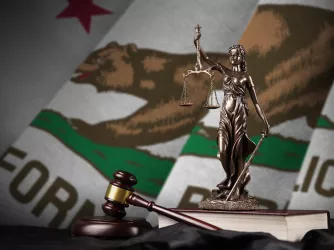Table of Contents
U. of Iowa VP Dismissive of University’s Place on ‘10 Worst’ List

Earlier this month, FIRE released our annual list of the top 10 threats to free speech on campus. Sometimes when universities are thrust into the spotlight (pun intended), they choose to take a closer look at their policies and institutional approaches toward campus expression and make changes to better protect students’ and professors’ rights. Other times, not so much. USA Today reported on FIRE’s list on Wednesday and relayed remarks from an administrator and a professor who questioned our methodology in selecting institutions. We’re happy to offer some clarification.
The University of Iowa (UI) landed on the list for censoring a professor’s anti-racist artwork after students complained about the piece, having deemed it racist at first glance, without considering its context. UI President Sally Mason followed up with an email to the UI community stating that there is “no room for divisive, insensitive, and intolerant displays” on campus—apparently forgetting that such displays are constitutionally protected at a public university like UI. Tom Rocklin, Vice President for Student Life at UI, is unconcerned by the chilling effect the university’s response to the artwork is likely to have on campus expression. According to USA Today:
Rocklin doesn’t think FIRE’s list was “anything to act upon.”
“Lists like this — the methodology typically isn’t well-described,” he says. “I’m much more interested in how people on our campus feel about issues then an advocacy group that clearly doesn’t know much about what goes on here.”
Rocklin isn’t alone in his focus on “methodology”:
Ronald Krotoszysnki [sic], a professor at the University of Alabama who specializes in First Amendment Law, believes the project is “important” but has reservations about the methodology as well.
“If public universities are failing to routinely respect the speech rights of their students, faculty and staff, that’s something that should be addressed,” he says. “However, FIRE’s complaints would be more compelling if the list was more methodologized.”
The University of Alabama (UA), by the way, made last year’s list for restricting spontaneous student expression on campus and maintaining policies that allow administrators to easily discriminate against certain viewpoints in approving permit requests for speech on campus. The detriment to the “marketplace of ideas” created by these policies was especially apparent in April 2013, when a pro-choice group at UA was prevented from offering counter-speech in response to a pro-life group’s demonstration—counter-speech that would have added to campus dialogue and that even the pro-life group welcomed.
So: Are FIRE’s picks justified, and should administrators at UI and UA be paying attention?
Yes, they are, and yes, they should.
It’s true that the “10 Worst” list reflects the FIRE staff’s subjective sense of the year’s worst institutions and trends for free speech on campus. But regardless of whether every First Amendment advocate would put these universities on their personal worst list, there’s no question that each institution on the list has taken significant steps to punish, censor, or chill constitutionally protected expression.
In UI’s case, the university effectively used students’ misinterpretation of a work of art to justify telling students that their free speech rights are much narrower than they actually are according to the law. And, like UI, UA maintains written restrictions on speech that reach well beyond the few narrowly-defined categories of speech that the Supreme Court has held are unprotected by the First Amendment. It is hardly a defense of these institutions to claim that among many indefensibly bad actors, others may arguably be worse.
It should be noted, though, that public universities are failing to routinely respect the speech rights of their students, faculty, and staff. If Krotoszynski is looking for numbers and a transparent methodology on that front, FIRE has it covered. Each year we publish a report on the speech codes at over 400 colleges and universities across the country, based on the information in our Spotlight database. This database catalogues each policy that restricts expression on campus and rates them according to the extent to which they infringe on First Amendment rights or clash with a school’s promise to respect students’ freedom of speech rights. As we reported in Spotlight on Speech Codes 2015, 55 percent of the institutions surveyed maintain at least one policy that clearly and substantially limits constitutionally protected speech.
If Krotoszynski is seeking specific examples that demonstrate how widespread acts of censorship on campus are, he need only look at our blog, The Torch; our case archives, which are continually updated with new free speech violations; or our annual report, which details some of the hundreds of requests for assistance we receive every year, as well as the hundreds of victories we have won for free speech, affecting millions of students. Although our modest staff of 22 full-time employees cannot compile data about every institution of higher education in the country, nor can we know about every instance of censorship, we document and work to address huge numbers of worrying incidents each year—certainly enough to demonstrate that there is a problem worth addressing on campus.
Given how many colleges and universities routinely trample on students’ and professors’ rights, it’s easy to argue that FIRE’s 10 picks this year should have included this or that college or university instead of the ones chosen. But perhaps instead of challenging the idea that UI is the worst of the worst, it could simply aim to be one of the best.
Recent Articles
FIRE’s award-winning Newsdesk covers the free speech news you need to stay informed.

O holy fight: New Hampshire Satanic Temple statue threatened by more than vandals

California and other states are rushing to regulate AI. This is what they’re missing

One day after FIRE lawsuit, Congress passes changes to filming permits in national parks
